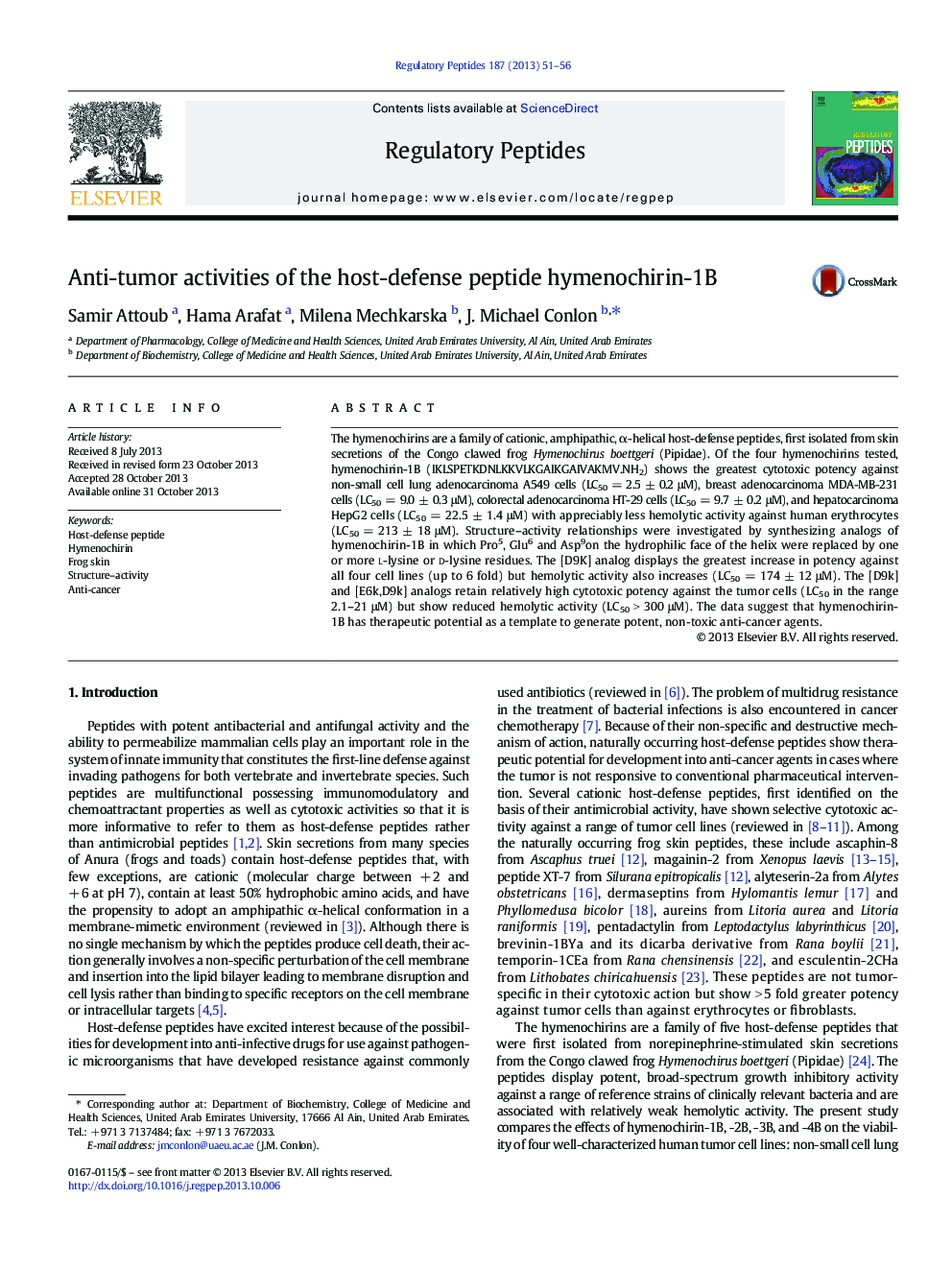| Article ID | Journal | Published Year | Pages | File Type |
|---|---|---|---|---|
| 2022460 | Regulatory Peptides | 2013 | 6 Pages |
•Hymenochirin-1B is cytotoxic against lung adenocarcinoma A549 cells (LC50 = 2.5 ± 0.2 μM).•The peptide is cytotoxic against breast adenocarcinoma MDA-MB-231 cells (LC50 = 9.0 ± 0.3 μM).•The peptide is cytotoxic against colorectal adenocarcinoma HT-29 cells (LC50 = 9.7 ± 0.2 μM).•The peptide is cytotoxic against hepatocarcinoma HepG2 cells (LC50 = 22.5 ± 1.4 μM).•The [D9k] and [E6k,D9k] analogs show reduced hemolytic activity (LC50 > 300 μM).
The hymenochirins are a family of cationic, amphipathic, α-helical host-defense peptides, first isolated from skin secretions of the Congo clawed frog Hymenochirus boettgeri (Pipidae). Of the four hymenochirins tested, hymenochirin-1B (IKLSPETKDNLKKVLKGAIKGAIVAKMV.NH2) shows the greatest cytotoxic potency against non-small cell lung adenocarcinoma A549 cells (LC50 = 2.5 ± 0.2 μM), breast adenocarcinoma MDA-MB-231 cells (LC50 = 9.0 ± 0.3 μM), colorectal adenocarcinoma HT-29 cells (LC50 = 9.7 ± 0.2 μM), and hepatocarcinoma HepG2 cells (LC50 = 22.5 ± 1.4 μM) with appreciably less hemolytic activity against human erythrocytes (LC50 = 213 ± 18 μM). Structure–activity relationships were investigated by synthesizing analogs of hymenochirin-1B in which Pro5, Glu6 and Asp9on the hydrophilic face of the helix were replaced by one or more L-lysine or D-lysine residues. The [D9K] analog displays the greatest increase in potency against all four cell lines (up to 6 fold) but hemolytic activity also increases (LC50 = 174 ± 12 μM). The [D9k] and [E6k,D9k] analogs retain relatively high cytotoxic potency against the tumor cells (LC50 in the range 2.1–21 μM) but show reduced hemolytic activity (LC50 > 300 μM). The data suggest that hymenochirin-1B has therapeutic potential as a template to generate potent, non-toxic anti-cancer agents.
